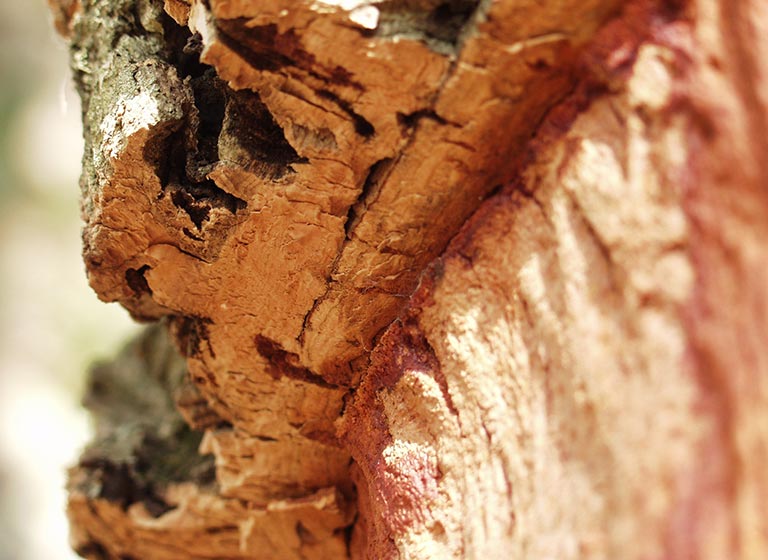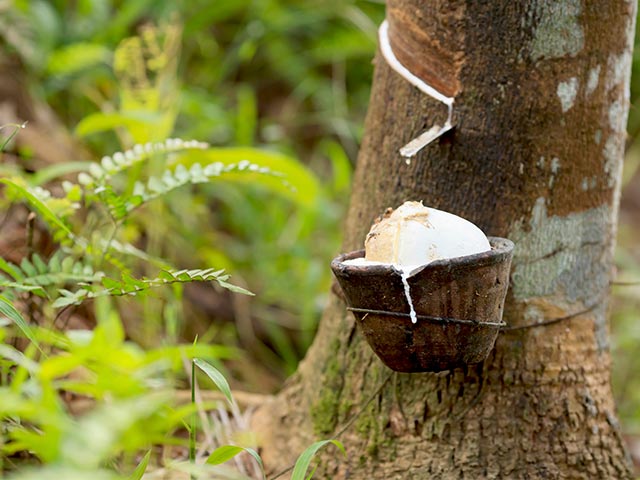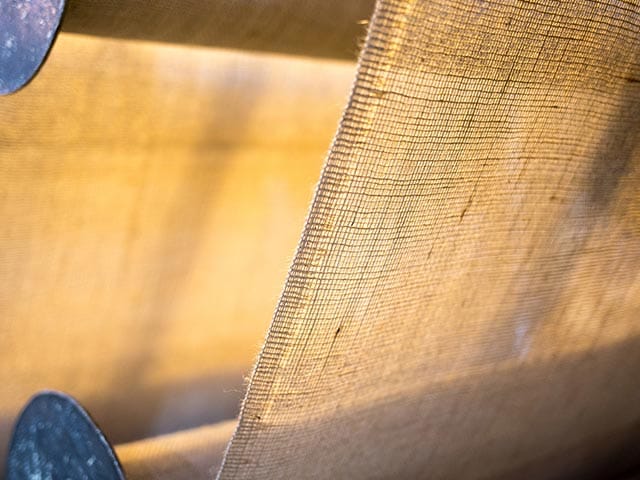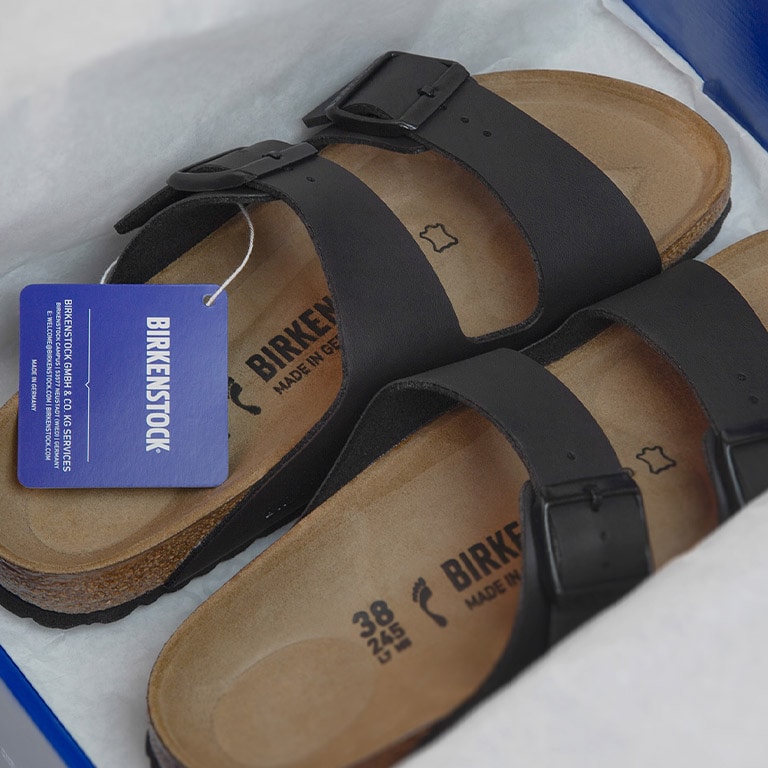SUSTAINABLE FOOTWEAR
How BIRKENSTOCK contributes to a sustainable environment
The protection of our natural resources is one of the most pressing issues of our time. We are committed to environmentally friendly operations. For us, sustainability is not a marketing-driven fad, but rather an expression of our corporate ethos. Environmental protection has long been paramount at BIRKENSTOCK. We constantly work to improve production processes, products, packaging and logistics.
Thanks to their durability, our products are sustainable by nature. A high proportion of the natural materials that we use are from sustainable sources: cork, natural latex, jute, leather, wool felt, copper and brass are among our most important materials.
NATURAL CORK – A SUSTAINABLE RAW MATERIAL
One of our most important raw materials is cork – a natural and sustainable product that boasts high elasticity, outstanding cushioning, and excellent heat and sound insulation. The cork layer is reproduced and can therefore be harvested again and again without harming the tree.
The cork is obtained from the bark layer of the cork oak. At least five centimeters of thick bark is stripped from the cork oak – a process that, depending on weather conditions, can only be repeated every seven to nine years. A single tree can provide 100 to 200 kilograms of cork during its life. To ensure that the cork is hygienically clean, the bark that has been removed is cooked thoroughly in tanks. It is then cut into strips that will be used to punch the bottle corks.
98% OF THE ADHESIVES ARE WATER-BASED AND THEREFORE ENVIRONMENTALLY FRIENDLY
BIRKENSTOCK was one of the first shoe manufacturers in the world to use water-soluble and solvent-free adhesives almost exclusively in its production processes. In recent years, we have successfully worked to considerably reduce the proportion of adhesives that contain solvents.







